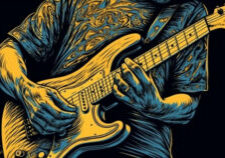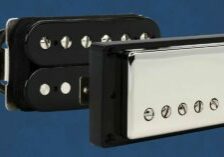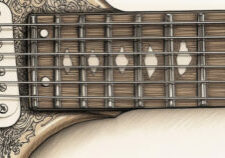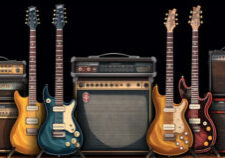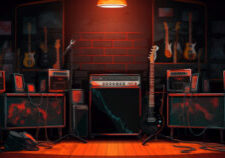This guitar effects for beginners guide is designed to help aspiring guitarists find valuable information on choosing the right guitar effects.
By understanding the basics of effects pedals and the difference between individual pedals and multi-effects units, beginners can make informed decisions.
This guide explores various types of effects pedals, including dynamic effects, pitch shifters, and modulation effects, allowing beginners to unleash their creativity and create their signature sound.
With essential accessories and useful tips, this guide provides all the necessary knowledge for beginners to navigate the world of guitar effects.
Understanding the Basics of Guitar Effects
Effects pedals allow guitarists to modify the sound of their instrument in various ways. By categorizing pedals into different effects types, it becomes easier to navigate the wide range of options available.
Each pedal offers its own unique tone and features, letting players to experiment and find their own signature sound. Additionally, beginners should consider whether they want to invest in individual pedals or multi-effects units.
Individual pedals provide a specialized and unique sound, while multi-effects units offer a variety of effects in one device. By understanding the basics of guitar effects, beginners can make informed decisions and create the desired sound they are seeking.
Individual Pedals Vs. Multi-Effects Units: Which Is Right for You?
Multi-effects units offer a wide range of effects in one device, making them a convenient and cost-effective option for guitarists. These units combine multiple individual pedals into a single, compact package, allowing guitarists to access a variety of effects without the need for multiple pedals and cables.
With a multi-effects unit, guitarists can easily switch between different effects and create complex soundscapes with just a few button presses. Additionally, multi-effects units often come with built-in features such as amp modeling and built-in tuners, further enhancing their versatility and value.
While individual pedals offer a more specialized and unique sound, multi-effects units provide a practical solution for guitarists who want to experiment with different effects without breaking the bank or dealing with a cluttered pedalboard.
Exploring Dynamic Effects for Added Control
Compressor pedals, EQs, signal boosters, and volume pedals are dynamic effects that allow guitarists to have greater control over their tone and volume.
Compressor pedals even out the volume of the guitar’s signal, providing a consistent sound.
EQ pedals allow guitarists to boost or cut specific frequencies, helping to shape their desired tone.
Signal boosters increase the strength of the guitar’s output without adding distortion, allowing for a louder and more powerful sound.
Volume pedals, on the other hand, control the volume of the signal going into the amp or other pedals, giving guitarists the ability to easily adjust their overall volume while playing.
Unleashing Your Creativity With Pitch Shifters
Pitch shifters, such as octave pedals and harmonizers, can add depth and complexity to a guitarist’s sound. They do this by adding harmony notes and creating unique pitch bend effects.
Octave pedals, for example, allow the guitarist to add a harmony note that is either an octave or two octaves below the original note. This can create a thick and full sound that adds richness to the overall tone.
Harmonizers provide the ability to choose the interval of the harmony note being added. This allows for more customization and creativity.
In addition to adding harmony, pitch shifters can also be used to create dive-bomb and pitch bend effects. These effects can add excitement and interest to a guitarist’s playing, making them a valuable tool for unleashing creativity.
Adding Depth and Texture With Modulation Effects
Modulation effects, such as chorus, phaser, flanger, and tremolo pedals, can add depth and texture to a guitarist’s sound. These effects create swirling, sweeping, jet-like, and pulsating effects that manipulate the original guitar signal.
Chorus pedals, for example, add a shimmering quality by doubling the signal and slightly detuning one of the voices. Phaser pedals, on the other hand, create a swirling effect by splitting the signal, altering the phase, and then recombining it.
Flanger pedals produce a distinctive whooshing sound by delaying and modulating the signal, while tremolo pedals create a rhythmic pulsation by varying the volume of the guitar signal.
Delving Into Time-Based Effects: Delay and Reverb
Delay and reverb are two commonly used time-based effects that add depth and spaciousness to a guitarist’s sound.
Delay, as the name suggests, involves repeating the original sound with a slight delay, creating an echo effect. This can range from a subtle doubling effect to a pronounced echo that adds texture and dimension to the guitar tone.
Reverb, on the other hand, simulates the natural reverberation of sound in different environments, such as a concert hall or a small room. It creates a sense of space and can make the guitar sound like it’s being played in a larger, more acoustically rich space.
Both delay and reverb can be used to enhance solos, create ambient soundscapes, or add depth to rhythm parts, making them essential tools for guitarists looking to expand their sonic palette.
The Art of Layering Effects: Creating Your Signature Sound
Reaching beyond the basics, guitarists can explore the art of layering effects to craft their own unique and signature sound. By combining multiple effects pedals, players can create a sonic landscape that is truly their own.
Layering effects allows for endless possibilities, as each pedal adds its own color and texture to the overall sound. For example, a guitarist could start with a foundation of distortion, then add a touch of delay for some depth, and finish it off with a touch of reverb for ambiance.
The key is to experiment with different combinations and settings to find the perfect blend. With layering effects, guitarists have the power to take their music to new heights and truly stand out from the crowd.
Essential Accessories for Your Guitar Effects Setup
To complete their guitar effects setup, every guitarist should consider essential accessories. These include patch cables, a power supply, and a pedalboard.
Patch cables are necessary for connecting the various effects pedals together, ensuring a clean and organized signal flow. It’s important to invest in high-quality patch cables to minimize signal loss and interference.
A reliable power supply is also crucial. It provides consistent and clean power to the pedals, preventing any unwanted noise or malfunctions.
Lastly, a pedalboard is essential for organizing and securing the pedals in one place. It makes it easier to transport and set up for gigs or rehearsals. A pedalboard also helps in keeping the cables neat and avoiding any accidental unplugging or damage to the pedals.
Tips and Tricks for Getting the Most Out of Your Guitar Effects
Using different combinations of effects pedals can help guitarists create unique and innovative sounds. By experimenting with various pedal combinations, guitarists can explore a wide range of tones and effects that can enhance their playing style.
For example, combining a distortion pedal with a delay pedal can create a rich and textured sound, while pairing a reverb pedal with a tremolo pedal can add depth and movement to the guitar’s sound.
Additionally, using pedals in different orders within the signal chain can further shape the overall sound. For instance, placing a fuzz pedal before a wah pedal can create a gritty and expressive tone.
Ultimately, the possibilities are endless, and it’s up to each guitarist to find their own unique combination of effects pedals to achieve the desired sound.

